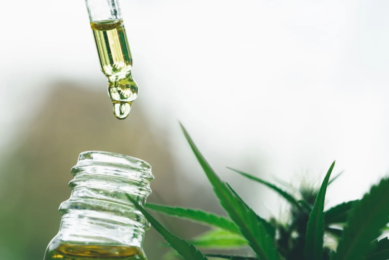Antimicrobial use, resistance and misconceptions
Following the recent release of the UK’s usage of antimicrobials in veterinary medicine, there was the usual storm from the organic lobby. Are they right, are we sitting on a time bomb waiting to go off?
Following the recent release of the UK’s usage of antimicrobials in veterinary medicine, there was the usual storm from the organic lobby. Are they right, are we sitting on a time bomb waiting to go off?
The VMD (Veterinary Medicine’s Directorate) released the therapeutic antimicrobial usage figures for 2007 and showed that the figures had fallen for the third consecutive year – by nearly 15% (67 tonnes) since 2004, to 387 tonnes. This appears to be very positive news, especially if one adds another 32 tonnes of growth promoter use, which has also stopped.
They also made a brave attempt to split the use of antimicrobials by different animal species, which is difficult, as several major products are approved for use in pigs as well as poultry and cattle. Pig use seems to be the largest with an estimated 206 tonnes or about 53% of UK usage and poultry 26%.
The bulk of these would be oral products such as medicated premixes and water solubles. These tend to be the older products such as tetracyclines, trimethoprim/sulphonamides etc, which are not so important in human medicine. Injectable products account for only 9.6% of total usage.
Small fraction
During the same time period though, the usage of two important antimicrobial groups in man, namely the cephalosporins and fluoroquinolones, did increase by 92% and 38% respectively to 6.2 and 2.0 tonnes respectively. This is still only a small fraction of what is used in human medicine, however. Is this going to be hugely damaging to pig or human medicine?
Cephalosporins are comparatively safe and highly effective antibiotics, hence their increase in popularity, especially in companion animal (dog and cat) medicine, which accounts for 70-80% of their use. The first and some second generation cephalosporins may also be given as tablets, hence their popularity in pet medicine, especially for treating chronic skin infections.
Fourth generation
The more advanced, third and fourth generation cephalosporins are primarily used by injection in pig and cattle medicine, and account for 10-15% of the overall cephalosporin use. Another feature, which adds to their relative safety is they are primarily excreted via the kidney and urine, so there is little contact and selection pressure on the gut organisms such as Salmonella species and Escherichia coli, which might be inadvertently passed on to man via meat contamination at the slaughter house. This lack of resistance was confirmed by two recent surveys in the UK on these two bacteria from pigs and no resistance to 3rd generation cephalosporins was detected.
Regarding fluoroquinolones, more recent data from UK pig and poultry farms identified the presence of fluoroquinolone resistant E. coli on 58% of pig farms, 91% of turkey farms and 50% of broiler units (Taylor and others, 2008).
In addition, 75% of pig farms had resistant Campylobacter species yet only 38% and 18% of turkey and broiler units respectively.
Serious?
On the face of it this looks very serious, but they used a very sensitive method of culturing the bacteria, which selected for resistant isolates. They included a fluoroquinolone in the culture media to only allow resistant isolates to grow.
In proportionate terms between susceptible and resistant strains, this was very variable from 0.0079-53% of pig E. coli isolates, which were resistant and <10-100% of Campylobacter isolates. This shows that fluoroquinolones do select for resistance in gut contents when used by injection and orally.
They are usually metabolised and excreted via the liver and bile into the gut, so that these bacteria are exposed. E. coli act as good ‘indicator’ bacteria for use and exposure to an antimicrobial but the proportion in normal flora is usually very low, unless recently treated but this data is not shown.
Pig isolates
By normal non-selective cultural methods, recent UK pig isolates of Salmonella have all been free of resistance to fluoroquinolones. It must be remembered that fluoroquinolones have been used for over 15 years, so the number of farms with resistant isolates is high, but the overall incidence is relatively low.
Campylobacter coli, the major species found in the pig can develop resistance quite quickly, as it is a one-step resistance mutation, hence the higher percentage of resistance, in comparison with E. coli, which has a two-step resistance development. Fortunately, as pointed out in the paper, ‘pig strains have significantly lower overlap with human-derived strains of Campylobacter than poultry strains’. They usually die out during meat chilling and storage.
Although the risk of resistance transfer to man appears relatively small from the use of antimicrobials in pigs, we must not become complacent and must continue to use them responsibly to maintain their availability and efficacy in veterinary and human medicine.











